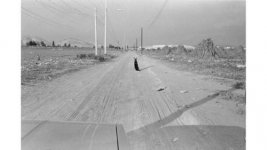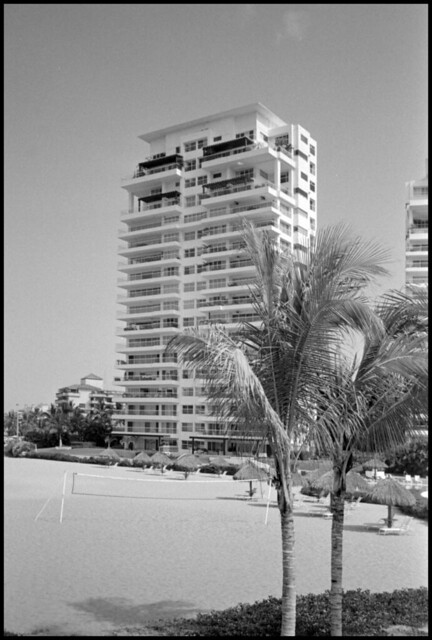brothernature
Established
I very much admire the images of Henry Wessel and Philip Perkis. I've been using HC-110 Dilution H (1+63) with Tri-X 400 shot at 200-320. I've been slowly pulling my development time, trying to find a sweet spot. I was wondering, is there anyone that achieves images that match the quality of Wessel/Perkis using HC-110? I love the tonality I get with HC-110, but think it lacks the sharpness I see in their images. I know they both believed in overexposing and under-developing, but I'm looking for more insight into their development techniques. I've heard that Perkis used Rodinal (1+50), but I'm not for certain. I'm wondering if I should give Rodinal a try, or if there are changes in agitation, dilution, etc I could make to HC-110. I just started getting consistent results I like, which is why I hesitate.
Not being able to have Rodinal shipped has also been a factor, since I'm way out in the middle of nowhere.
I've attached a couple of images of theirs that come to mind, the pics online do not do them justice, but if you have Wessel's book Incidents, or Perkis' book The Sadness of Men, you can see the quality I'm talking about.
Thanks!
p.s. I know that there are many other much more important factors playing into the strength of their images, but would still love to try for the quality in negative that they achieved.
Not being able to have Rodinal shipped has also been a factor, since I'm way out in the middle of nowhere.
I've attached a couple of images of theirs that come to mind, the pics online do not do them justice, but if you have Wessel's book Incidents, or Perkis' book The Sadness of Men, you can see the quality I'm talking about.
Thanks!
p.s. I know that there are many other much more important factors playing into the strength of their images, but would still love to try for the quality in negative that they achieved.












